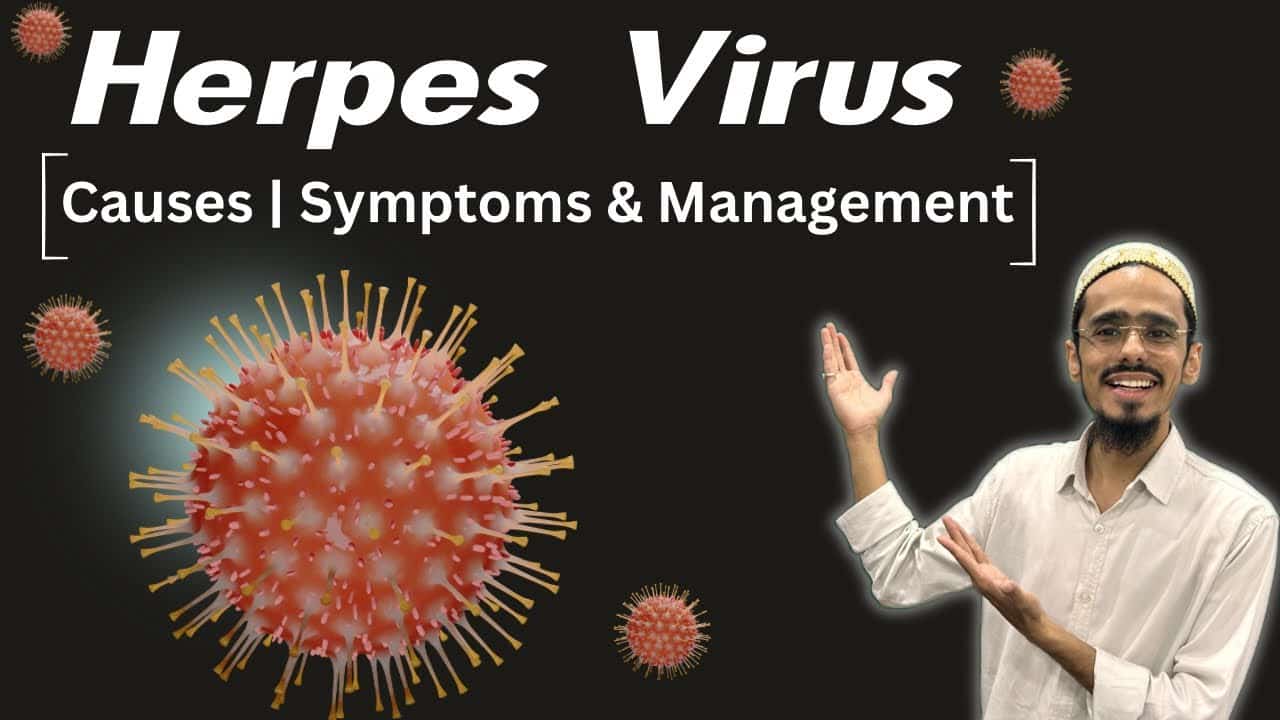Introduction
Herpes is the common viral infection which affects millions of millions people worldwide.
It is cause by the herpes simplex virus (HSV) and is categorize into two main types: herpes simplex virus type 1 (HSV-1) and herpes simplex virus type 2 (HSV-2).
While both types can cause similar symptoms, they are associate with different areas of the body.
This article aims to provide an overview of herpes, including its types, symptoms, transmission, and management.
Types of Herpes (Understanding Herpes )
HSV-1:
This type of herpes primarily causes oral herpes, which is known as cold sores or fever blisters.
It is usually transmit through oral-to-oral contact and can also lead to genital herpes through oral-genital contact.
HSV-1 infections are highly prevalent and can be asymptomatic in some individuals.
HSV-2:
HSV-2 is responsible for causing genital herpes.
It is primarily transmit through sexual contact and can also lead to oral herpes through genital-to-oral contact.
Genital herpes can cause painful sores and blisters in the genital and anal regions.
Symptoms (Understanding Herpes )
Both HSV-1 and HSV-2 infections can cause a range of symptoms, including:
Oral Herpes (HSV-1):
Cold sores or fever blisters around the mouth or also on the lips.
These sores are often accompanied by tingling or itching before they appear.
Genital Herpes (HSV-2):
Painful sores, blisters, and ulcers in the genital area as well as around anal areas.
These symptoms can be accompanied by flu-like symptoms, such as fever, body aches, and swollen lymph nodes.
Transmission
Herpes is highly contagious and can be transmit through various forms of direct contact, including:
Skin-to-Skin Contact:
Herpes can spread through direct skin-to-skin contact with an active outbreak.
Even when there are no visible symptoms, the virus will still be transmit.
Sexual Contact:
HSV-2 is primarily transmit through sexual activity, including vaginal, anal, and oral sex.
Condoms and dental dams can provide some protection but are not foolproof.
Vertical Transmission:
Pregnant individuals with genital herpes can pass the virus to their newborns during childbirth, which can lead to severe complications for the baby.
Management and Treatment
While there is no cure for herpes disease, there are several ways to manage and reduce the frequency and severity of disease:
Antiviral Medications:
Antiviral drugs, such as acyclovir, valacyclovir and famciclovir, may help to reduce the severity and duration of outbreaks.
They may also be prescribe for daily use to suppress the viral infection and will reduce the risk of transmission.
Safe Practices:
Abstaining from sexual activity during outbreaks, using condoms or dental dams, and communicating with sexual partners about herpes can reduce the risk of transmission.
Personal Hygiene:
Keeping the affected areas clean and dry can help prevent secondary bacterial infections and promote healing.
Healthy Lifestyle:
A strong immune system can help to manage the herpes outbreaks.
Maintaining a balanced diet , doing regular exercises, managing stress and taking enough sleep are all important.
Conclusion
Herpes is a common viral infection which is cause by the herpes simplex virus.
It can lead to oral or genital symptoms and is highly contagious.
While there is no cure, antiviral medications and safe practices can help manage outbreaks and reduce the risk of transmission.
If you suspect you have herpes or experience symptoms, it’s important to consult a healthcare professional for diagnosis and appropriate management.
